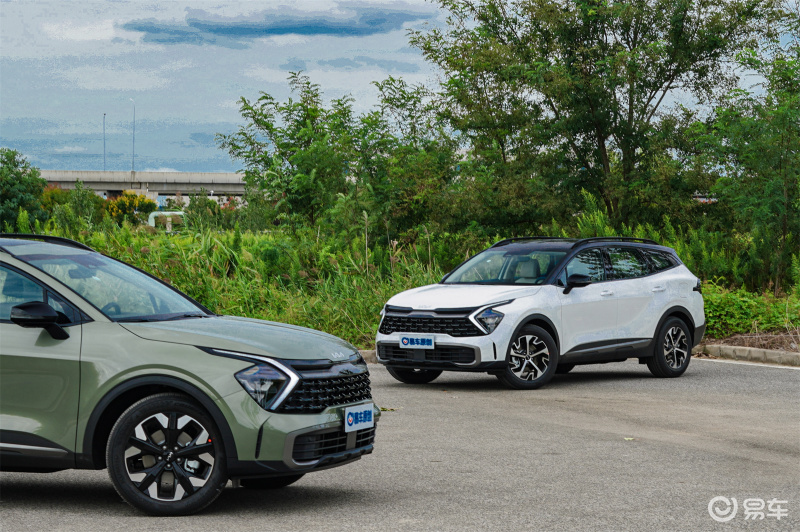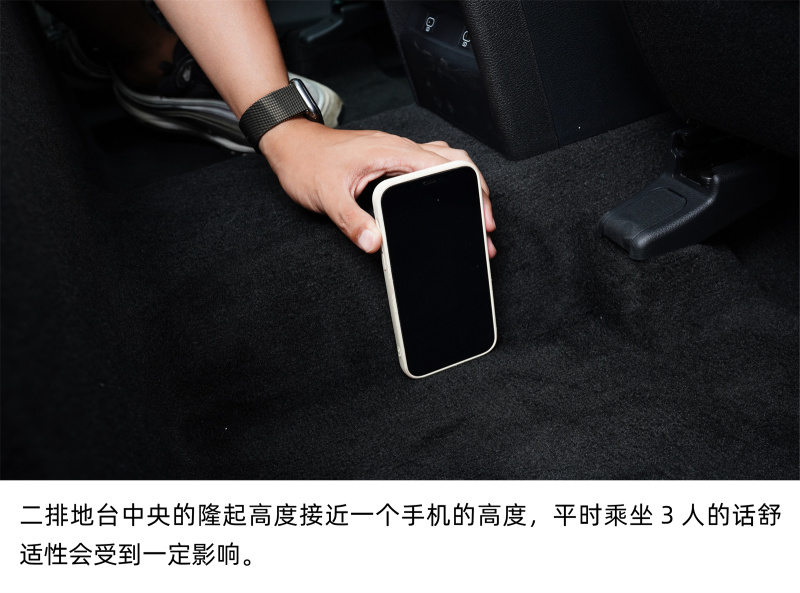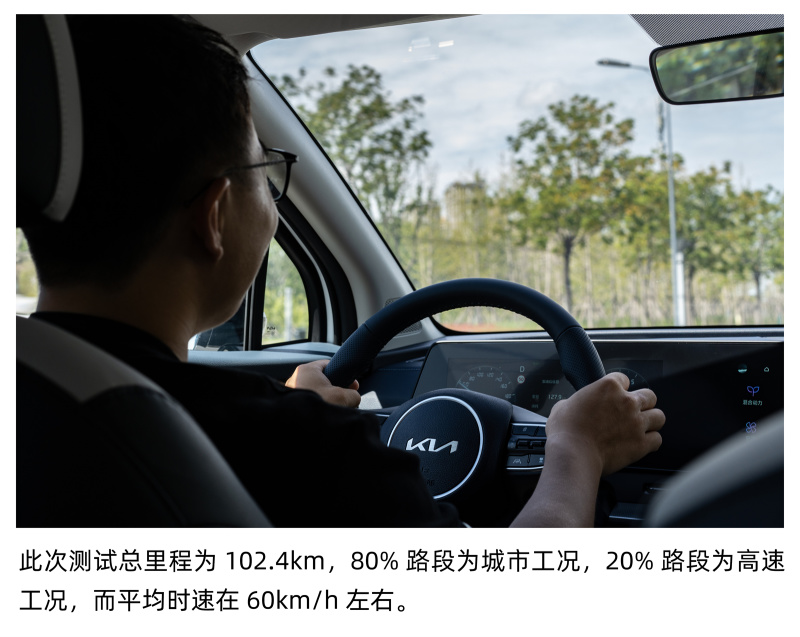
There is no need to debate whether Bitauto's original pure electric or gasoline-electric hybrid is the future, because if a car brand is not talking about hybrid in 2022, then there is a high probability that it will not do well, at least in the future. This will be the case in the Chinese market. Kia is obviously a brand with strong technical strength. The annual sales volume of 650,000 vehicles at its peak gave it the confidence and strength to compete with Japanese brands. The original classic models Zhipao, K3 and K5 are still popular among young people. Also extremely popular. However, if I say today that Toyota has a THS hybrid system and Honda has an iMMD hybrid system, what will you think of Kia? To reduce brain speed, the model I tested this time, Shibo Tuojie HEV, brought a "late bloomer" hybrid system - TMED hybrid system.

At the previous Chengdu Auto Show, Kia unveiled a new generation of Shiba Extension. However, compared to the highly popular 2.0T+8AT version, few people paid attention to the Shiba Extension 2.0L HEV model. But having said that, mixed "Two fields and one Dee" in the automotive field have always been firmly in the top spot. Naturally, not many people know about Kia's TMED hybrid system, but arriving late is like missing out. So below, we follow the usual practice of giving a comprehensive understanding of Shibo Tuojie HEV from the outside to the inside, from static to dynamic.

The new Shibo Tujie adopts a design concept called "Opposites United". Judging from the real photos, the front face of the new car has many design elements that will impress you, such as the grille and headlights. The integration method is very special. At a time when car designs are becoming more and more similar, and plagiarism is becoming more and more serious, Shibo Tuojie still maintains a highly original design, which is commendable.


Shibo Tuojie’s LED daytime running lights adopt a boomerang-like design. At the same time, the separation method of the main headlights and daytime running lights is also very special, which has a strong visual impact.



The detailed design of Shibo Tuojie HEV still stands up to scrutiny. The waistline is simple, smooth and powerful. At the same time, the blackened treatment and the appearance of the luggage rack add a sense of sportiness to it. The entire side looks more youthful. human taste.




The Shibo Tuojie HEV has an exclusive "HEV" logo on the rear, which is one of the few differences between it and the fuel version.


The interior materials of Shibo Tuojie HEV are not much compared with the current independent brand models of the same level.It has advantages, but it is not without its merits. For example, a large amount of piano paint is used on the center console and the inside of the door panels. At the same time, the imitation carbon fiber material around the door handles also improves the interior quality.




The perforated leather steering wheel feels quite good. At the same time, as a hybrid model, the Shibo Tuojie HEV is also equipped with paddle shifters, which can be regarded as retaining a small amount of driving fun.

The new Shibo Tujie HEV has replaced almost all the air conditioning and temperature adjustment buttons with touch controls, but there is still room for optimization in the densely packed buttons.
In addition, Shibo Tuojie HEV provides front-row mobile phone wireless charging function, as well as a USB interface and a Type-C interface.



The panoramic sunroof is naturally a configuration that Chinese people prefer, and when it comes to this, the configuration of the new generation of Shiba Expansion actually catches up with the European version and even the American version, reflecting Kia’s intention to use the Shiba Extension to redefine the world. Determination to get back to the top.

Then let’s take a look at the space performance of the Shibo Tuojie HEV. I am 179cm tall. After adjusting the front seats to a reasonable position, there is about a punch of headroom left, and the performance is not bad.

It is worth mentioning that the seat support of the Shibo Tuojie HEV is also very good. The filling is full but not collapsed, and it fits the back very well, giving both comfort and support.


The performance of the rear row of Shibo Tuojie HEV exceeds expectations. The legroom of more than two fists is not inferior to the Honda CR-V, which is known as the "space magician". At the same time, the headroom also has four fingers, and the overall space is It has obvious advantages in compact SUVs.



The conventional storage space in the car is in line with the standard of this class, and the front center aisle has been hollowed out, which is also a practice that many family SUVs are keen on nowadays.

The specific volume parameters of the trunk of Shibo Tuojie HEV have not been announced, but judging from experience, the volume is among the best in its class; in addition, the real-life model is equipped with an electric tailgate and second-row seats. Fold down with one click, ensuring practicality and space flexibility.


Before driving it again, let’s first take a look at the “core” of Shibo Tuojie’s 2.0L HEV. It is composed of a 2.0L naturally aspirated engine + motor, and the transmission system is matched with 6AT. As you can see here There must be many people who have doubtsQuestion, not only is it different from the Honda CR-V hybrid version that uses E-CVT, but the current gasoline-electric hybrid systems developed by independent brands also tend to choose multi-speed DHT. So what is the difference between Kia's TMED hybrid system?

Structurally, the TMED hybrid system mainly consists of an engine, clutch, drive motor, transmission, HSG (starter and generator integrated motor) and power battery. The engine and drive motor are the direct power sources of the car. HSG realizes the start and stop of the engine and idling charging, and the transmission of hybrid vehicles is basically the same as that of traditional vehicles. The power battery is an energy storage unit used to store energy from the drive motor and HSG, or to provide energy for the drive motor and HSG to drive the vehicle and start the engine. Essentially, the TMED hybrid system still uses a P0+P2 dual-motor hybrid structure.



Before the road test drive, my colleagues and I had a field experience with the Shibo Tuojie HEV, and our unanimous conclusion was that the handling exceeded our expectations, the front of the car was flexible and the rear of the car had strong following. , even when cornering at a speed of 80km/h, there is no panic at all.

Compared with the fuel version, the gap in the straight-line acceleration capability of the Shibo Tuojie HEV will be more obvious in the middle and rear segments, but fortunately, the control is flexible and the power output is linear, so it is not difficult to get started.



It is worth mentioning that when driving at low speeds, the 6AT gearbox of the Shibo Tuojie HEV actually has a very low presence. The quietness of the entire vehicle and the smoothness of the power output are both worthy of praise.


In my opinion, the Shibo Tuojie HEV is still clearly oriented towards family cars. The steering wheel is light and the accelerator and brake pedals are not heavy. In addition, the HEV model brings a brisk acceleration feeling, which makes driving The Shibo Tuojie HEV obviously does not have the desire for intense driving.

The last item is the fuel consumption test, and this is also the top priority of this test drive. First, we fill up the fuel tank (add 92# gasoline) and clear the meter display data. At this time, the endurance capacity displayed by Shibo Tuojie HEV is 830km. Next, we started the fuel consumption test.



During the actual measurement, the maximum fuel consumption of the Shibo Tuojie HEV rose to over 7.5L/100km, and the road section was naturally a high-speed section with a speed of 110km/h.


The results show that this time we alwaysA total of 4.86L of gasoline was consumed, and the cost to refill the fuel tank was 39.65 yuan.

At this time, the vehicle mileage is 102.4km, and the average fuel consumption is 5.1L/100km; after calculation (4.86L/102.4km×100=4.74L), this time I We actually measured the average fuel consumption per 100 kilometers of the Shibo Tuojie HEV to be 4.74L, which is better than the displayed data. In addition, with reference to the oil price of 8.16 yuan, the driving cost per kilometer of the Shibo Tuojie HEV is about 0.58 yuan.

In fact, Kia's involvement in the new energy field can be traced back to the 1990s, and it is now a world leader in the new energy field. Judging from this actual experience, I feel that the hybrid system of Shibo Tuojie HEV is simple and easy to use. The technical structure is not complicated compared to Liangtian, but the actual experience can give me high marks, and As for the hybrid system itself, I always think that fuel economy and after-sales protection are what users value more. In this regard, Shibo Tuojie HEV has also done a good job.

Editor’s comment: In my opinion, the Kia brand has always been a technologically advanced automobile manufacturer. Many of its engines have been ranked among Ward’s top ten engines. In recent years, its CVVD technology has once again ranked among the top ten. Confirming the title of "Technical Kia". Therefore, although the TMED hybrid system of Shibo Tuojie HEV is not as well-known in China as Toyota THS, Honda iMMD and BYD DM-i, I am not worried about Shibo Tuojie HEV in terms of product strength alone. The design, space, and power are all extremely balanced, which is why it is known in Europe as one of the most efficient hybrid systems in the industry. Therefore, after this test drive, I think the Shibo Tuojie HEV can completely compete with the current mainstream compact SUVs. Of course, in addition to the product itself, the real constraints for Kia are brand factors and sales channel capabilities, as well as the final Pricing!
